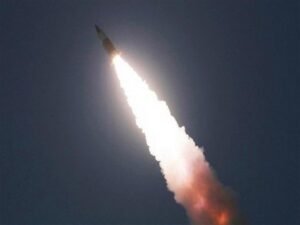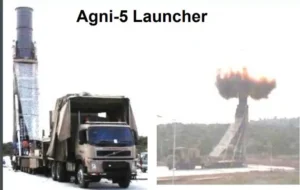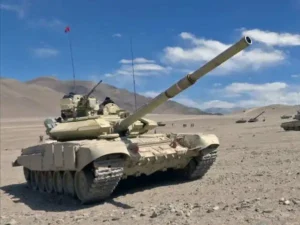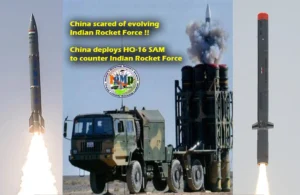This has raised many questions. Was Iron Dome overvalued or overwhelmed by the Hamas’ missiles? Will countries now hesitate to buy defense systems from Israel, the world’s 10th largest arms exporter in 2022?
Incidentally, Israel exported a record US$12.556 billion in defense products last year. The 2022 figures marked a 50 percent increase over the previous three years and a doubling in volume over the previous decade. Drones accounted for 25 percent of the 2022 exports, and missiles, rockets, or air defense systems for 19 percent, it is said.
As regards the Iron Dome that was developed in 2011, either the system as a whole or its components have generated interest in the global arms bazaar. While parts of the Iron Dome have already been sold to countries like Canada, Britain, Finland, the Czech Republic, and Slovakia, the signing of the US-negotiated Abraham Accords in 2020 with countries like the UAE, Bahrain, Morocco, and Sudan has made the system more appealing to Israel’s Mideastern neighbors. In November 2022, Hungarian officials expressed interest in the Iron Dome system as radar components.
According to Pieter Wezeman, senior researcher at the Stockholm International Peace Research Institute (SIPRI), over the past decade, several countries have shown interest in the Iron Dome system: Romania and Cyprus in 2022; Azerbaijan in 2016; South Korea in 2012; India in 2010; and Singapore in 2009. But India and South Korea ultimately did not go ahead with those plans; in other cases, there is no confirmation of actual orders or deliveries.
Reportedly, Azerbaijan purchased its version of Israel’s Iron Dome in May 2021. The United States purchased Iron Dome components in 2019. According to Wezeman, “The U.S. procured a system based on the Iron Dome, consisting of two batteries with U.S. radars and other components and using the Tamir missiles [missiles used in the Iron Dome system]. Israel would be interested in getting these Tamirs from the US now. The US also started the process to buy some 1920 Tamir missiles in 2023, though we shall see if that deal will rush through now [that] Israel will need many of these missiles to replenish and expand its Iron Dome capabilities.”
Incidentally, any export of Iron Dome or its components to a third country requires the consent of Washington since it was developed jointly by the United States and Israel. The system, which can be truck-towed, consists of three main elements: the launcher and its interceptors, a ground-based multi-mission radar, and a control system. It intercepts the rockets and missiles with its rocket interceptors and uses radar to detect and track them.
Israel is said to have 11 Iron Dome batteries deployed around the country. Each battery can provide security coverage up to 155 square kilometers against rockets with ranges between 4 km and 70 km. One battery includes three to four launchers, each holding up to 20 interceptors. Each battery reportedly costs around US$100 million (US$157 million), and each interceptor missile around US$50,000.
Given the costs involved, the Iron Dome system selects its targets. To conserve interceptors, the radar system quickly determines whether the enemy rocket is heading toward a populated area. If not, then the rocket is ignored and allowed to land harmlessly.
Israelis are indeed proud of the performance of the Iron Dome. Israel Defense Forces (IDF) claims that Iron Dome is “a singular icon of technological innovation” capable of handling multiple threats simultaneously, with a success rate of up to 97 percent. It says that no existing air-defense system can claim nearly 2000 intercepts achieved by the Iron Dome.
It has been pointed out that since 2011 (the year the Iron Dome was developed), the IDF has used the Iron Dome system “to shoot down over 1,700 unguided rockets and mortar shells launched by militants in Lebanon, Syria, and the Gaza Strip against Israeli communities. An Iron Dome battery can also engage aircraft, drones, large artillery shells, and possibly even cruise and ballistic missiles—as proven by its shootdown of an Iranian Fateh ballistic missile on January 20, 2019”.
But then, some skeptics like Dr. Moti Shefer think that Iron Dome is one of the most prominent bluffs ever seen. Shefer, an Israeli engineer, has argued that “There is no missile in the world today able to intercept missiles or rockets. Iron Dome is a sound and light show that intercepts only Israeli public opinion and itself. All the explosions you see in the sky are self-explosions.
“No Iron Dome missile has ever collided with a single rocket. Open spaces are a myth invented to up Iron Dome’s current interception percentages. The rockets announced as intercepted by Iron Dome either never reach the ground or are virtual rockets invented and destroyed on the Iron Dom control computer. To this day, no one has ever seen an intercepted rocket fall to the ground.”
But then it must be clarified that the above comment of Shefer came way back in 2014. In between, there must have been further technological innovations to replenish the Dome’s interceptors.
In fact, on August 2, 2022, the US, which had purchased two batteries from Rafael Advanced Defense Systems, the maker of Iron Dome, including 12 launchers and 240 interceptors, conducted an interception test at the White Sands missile range successfully to ensure that it met US Army safety standards. This was the second interception test since the two batteries were supplied to the US Army at the end of 2020.

Iron Dome Fails?
Against this background, one may ask how the Iron Dome proved so ineffective against the attacks from Hamas. Among the answers that have come from some experts, the following are noteworthy:
One, the Iron Dome is designed to prioritize the most threatening missiles – such as cruise missiles – over smaller rockets or the microlights used by Hamas. Sam Cranny-Evans of the Royal United Services Institute think tank argues that “this very well coordinated attack of nearly 5000 rocket attacks meant that rather than 10 or 20 rockets being launched from one place into Israeli airspace, this was happening from multiple angles, which makes air defense hard”.
His point is that the sheer volume of the attack swamped Israeli defense systems. They were overwhelmed, particularly when the attacks by Hamas was not limited only to rockets; these included simultaneous launching of land, air, and sea invasion. It was too much for Israeli defenses to focus on the Iron Domes.
Malcolm Davis, a senior analyst in defense strategy at the Australian Strategic Policy Institute, seems to agree with the above view.
Two, it is possible that Hamas had studied the system’s vulnerabilities and accordingly used new weapons to penetrate it. A report by the New York Times has quoted US officials saying that “new weapons fired by Hamas for the first time Saturday could be harder to intercept and may have also played a role.
Hamas used a new missile system known as Rajum during the attack. Also, it employed small drones that dropped munitions on Israeli military positions, according to Janes, a defense and open-source intelligence firm”.
Hamas and its principal supporter, Iran, seem to have learned the past lessons when past rocket barrages by Hamas were blunted effectively by the Iron Dome.
Accordingly, their new weapons/missiles were fired in hundreds in rapid succession, so it became too much for the Dome to handle. And these were pretty cheap. Uzi Rubin, considered one of the fathers of Israeli missile defense, has been quoted to have said that.
In contrast, the short-range rockets fired by Hamas would be between US$300 and US$800 each. Each intercepting missile from the Iron Dome costs about US$40,000 to US$50,000.
Considering the above arguments, it will be safe to say that Israel’s Iron Dome may not be enough to safeguard a more extensive territory when confronted with an overwhelming number of missiles, even if the latter are cheap and of lesser capabilities. However, quantity, not quality, is the issue here. And that being the case, it would be premature to say that the Dome faces impending doom.
- Author and veteran journalist Prakash Nanda is Chairman of the Editorial Board – EurAsian Times and has been commenting on politics, foreign policy, and strategic affairs for nearly three decades. A former National Fellow of the Indian Council for Historical Research and recipient of the Seoul Peace Prize Scholarship, he is also a Distinguished Fellow at the Institute of Peace and Conflict Studies.
- CONTACT: prakash.nanda (at) hotmail.com
- Follow EurAsian Times on Google News
Source link








